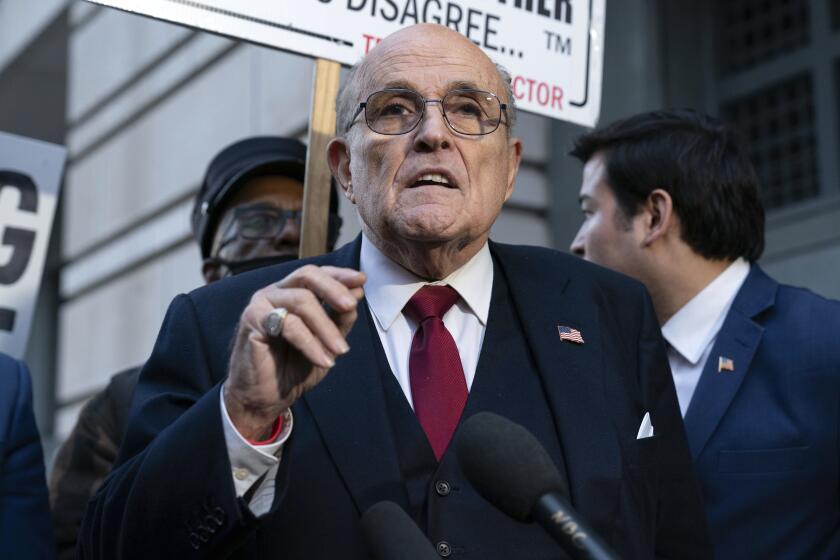Congress Hammers Out Preliminary Farm Bill
Breaking a stubborn impasse, House and Senate negotiators reached agreement Thursday on the outlines of a farm bill that would vastly increase federal spending on crop subsidies and conservation programs.
The breakthrough came a day after President Bush traveled to South Dakota and called on Congress to reach a quick compromise on the legislation, which passed the House and Senate in significantly different forms.
Senate Agriculture Committee Chairman Tom Harkin (D-Iowa) announced the agreement by negotiators, although sources familiar with the talks cautioned that some changes were still possible, based on a pending cost analysis.
Negotiators want to draft a final bill that would increase spending for farm programs--currently about $100 billion over the next 10 years--by about $73 billion. Most of the money will go to expand existing programs that subsidize major crops such as corn, rice and cotton.
The bill also would significantly hike spending for conservation measures. Harkin said the compromise would include a new conservation program he had proposed, at a cost of $2 billion, which he said represented the largest single new program under the legislation.
The bill is rife with political significance because several of the year’s most hotly contested Senate races are in farm states, including South Dakota. Although the House-Senate negotiations at times teetered on the brink of collapse, neither party wanted to risk being blamed for the failure of a bill that provides an economic lifeline to many farmers.
Negotiators watered down a contentious provision in the Senate version of the bill that would have slapped a firm $275,000-per-farm annual cap on federal subsidy payments. Negotiators agreed to raise the cap to $360,000, and leave a loophole that could allow some farmers to collect even more.
The stricter cap had been approved as a way to channel more funding to small and mid-size farmers, and to dilute criticism that existing programs concentrate too much money in the hands of big agribusinesses.
But the cap met heavy opposition from a bipartisan coalition of lawmakers from the South and West--including California’s two Democratic senators, Dianne Feinstein and Barbara Boxer. These lawmakers said the cap would disproportionately hurt cotton and rice growers, whose subsidies are bigger because their costs are much higher than the growers of other commodities.
California farmers, who overall get relatively little federal aid, had conflicting interests in the trade-off between funding larger commodity payments and new funding for conservation and other programs. The state’s cotton and rice growers get significant federal subsidies and opposed the cap. But growers of fruits and vegetables and other commodities not covered by the subsidy program stood to benefit from proposed increases in funding for conservation.
Environmentalists said they were disappointed that the compromise did not provide more for conservation programs and watered down the cap. Ken Cook, president of the Environmental Working Group, said the reported agreement was so loophole-ridden that it was toothless.
“It’s a joke,” he said. “You have to ask why the Senate bothered.”
Sources said the conferees dropped a controversial provision meant to help small livestock producers by limiting ownership of livestock by meatpackers. That proposal was especially important to Sen. Tim Johnson (D-S.D.), who is locked in a tough reelection fight and is a close ally of the state’s other Democratic senator, Majority Leader Tom Daschle.
More to Read
Start your day right
Sign up for Essential California for news, features and recommendations from the L.A. Times and beyond in your inbox six days a week.
You may occasionally receive promotional content from the Los Angeles Times.







